British colonial policy
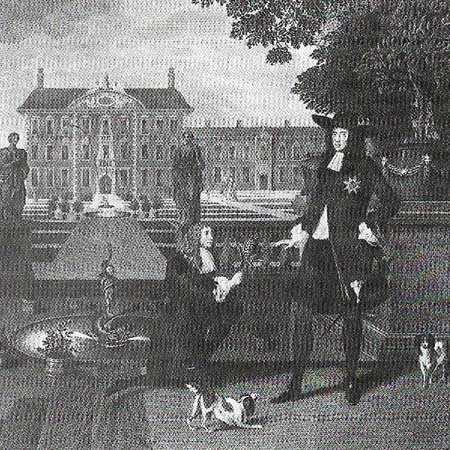
Figure 1. The presentation of the first pineapple grown in England to Charles II is an exotic example of the change in British eating habits that followed the colonization of the New World. Maize (corn), which has a yield ten times higher than wheat; the potato, which thrives in poor soil and made possible Ireland's population explosion; the kidney bean and pumpkin were all introduced into Britain in the late 16th century, but it was not until the 18th century that their widespread cultivation brought about any significant improvement in the diet of the peasantry. In this period, the colonies were intended to benefit the mother country rather than become independent economic entities.
Figure 2. British interests in the l8th century were mostly in the hands of chartered companies. The largest of these was the Hudson's Bay Company, whose founders were given a royal charter by Charles II in 1670. Canada provided furs, fish, and, most importantly, timber to build warships for the navy to build warships for the navy. But from a commercial point of view the country was negligible compared, for example, with the Sugar Islands. From 1762 to 1776, the value of imports from Grenada alone was eight times that from Canada, whereas exports from Britain to Grenada were double the value of those to Canada.
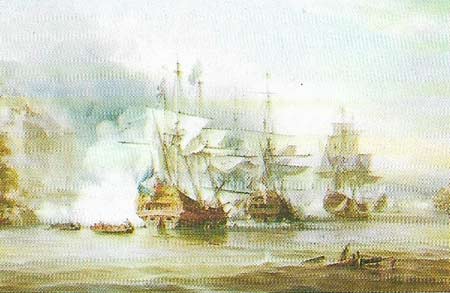
Figure 3. An English fleet attacked Portobelo, a Spanish port on the Colón peninsula of Panama, in 1739. Spain was declining as a colonial power by the mid-17th century and Britain was anxious to ensure that France, the chief rival for control of the Spanish dominions, did not gain control over the main Spanish colonies. The important of bullion from the New World had mostly stopped by this time; sugar was the valuable crop for which European nations were struggling in the Caribbean.
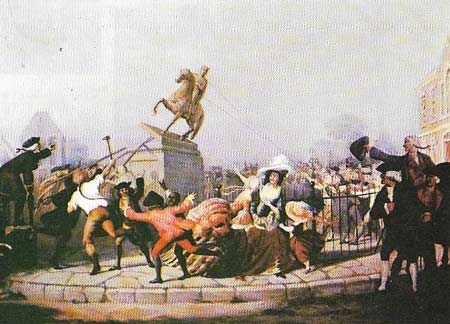
Figure 4. New Yorkers pulled down the statue of George III, symbolizing their revolt against Britain. But the loss of the American colonies meant merely a reorientation of the empire towards India; and British trade with the USA itself soon grew.
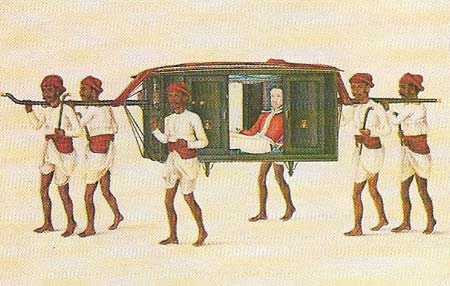
Figure 5. Some Britons made huge fortunes out of their service with the East India Company. These "nabobs" lived ostentatiously in India, and at home bought seats in Parliament to influence policy.
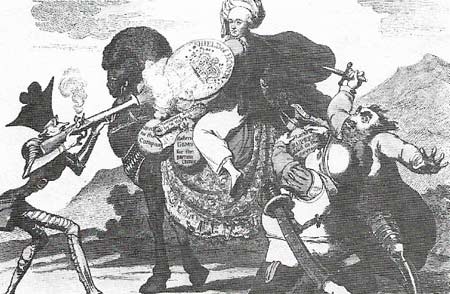
Figure 6. The impeachment of Warren Hastings, for corruption and mistreatment of natives when he was governor of Bengal (1772–1785), began in 1788. The trial dragged on for seven years and ended in Hastings' acquittal.
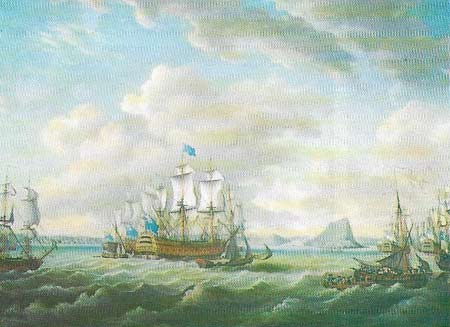
Figure 7. Gibraltar, first occupied in 1704, became a British possession by the Treaty of Utrecht (1713). Spain joined France and the USA in the war against England in 1779 and besieged the colony for four years. George III tried to barter Gibraltar for Spanish colonies in America, but by the Peace of Paris (1783) Britain gave up East and West Florida to Spain and retained Gibraltar.
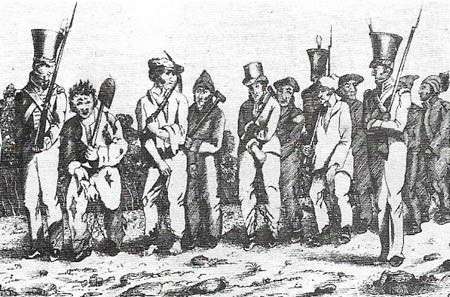
Figure 8. Penal colonies were set up in the new colonies of Australia in the 18th century. The first convicts were sent to New South Wales in 1788, and to Van Dieman's Land (Tasmania), shown here, in 1803. Transportation was generally for life, but it could often allow the convict to establish himself in the colony; at the time there were more than 100 offenses in England that could bring the death penalty.
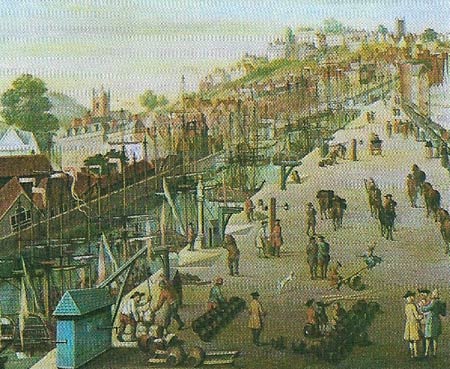
Figure 9. The port of Bristol prospered from having almost a monopoly of the lucrative West Indian slave trade during Walpole's administration. With a population of about 50,000, it was, after London, the second-largest town in 18th-century England.
British exploration overseas began in earnest in the sixteenth century and the foundations of the Thirteen Colonies in America were laid in the reign of Charles II (1660–1685) (Figure 1). Nevertheless the modern British Empire is usually dated from the Treaty of Utrecht (1713). The treaty gave Britain some minor gains in the Caribbean; France yielded its claims to Newfoundland and Nova Scotia; Spain ceded Gibraltar and Minorca to Britain and, most important, transferred to it the asiento, giving Britain the right to furnish slaves to the Spanish colonies and to send one ship a year to trade in those colonies. Anglo-French rivalry For a century the power of Spain had been on the wane. After 1713 France and Britain were the great rivals and during the next century a series of wars between the two nations, ending in Wellington's victory at Waterloo (1815), raised Britain to the rank of the world's dominant colonial power. In the 18th century it was understood that trade was power. The Anglo-French wars were fought to win control of the world's trade, especially the highly profitable trade in slaves and sugar.
The 18th-century empire was based on the "triangular trade". British ships carried manufactured goods to Africa, exchanged them for slaves, sold those in the West Indies and the southern American colonies, and returned home with cargoes of sugar, tobacco and raw cotton. By 1750 hardly a trading or manufacturing town in England was not connected with the trade. Between 1670 and 1786 more than two million slaves were transported from Africa to British colonies.
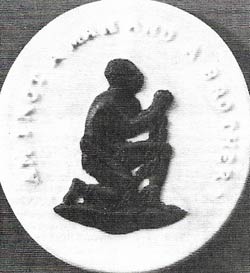 |
| Commemorative medallions, such as this one by Josiah Wedgwood (1730–1795), were struck to encourage the abolition of the slave trade in the British Empire. This took place in 1807 and resulted partly from an evangelical campaign by William Wilberforce (1759–1833), and partly because British sugar-planters wished to stop the flow of slaves to their French rivals when their own plantations were at their maximum production and could survive without the import of more slaves. |
The imperial' economy was run on the principle that the colonies provided raw materials and accepted in return manufactured goods from the home country. This system was strictly maintained by the Navigation Act, passed in 1660, which required that trade between Britain and the colonies be carried by British-built ships manned by British crews. Produce going from the colonies to foreign parts had first to pass through a British port. This trade with the protected market of the American colonies was important, too, to British industry, which had to seek new outlets after the colonies won independence. It also hindered the growth of colonial industry and thus encouraged the American demand for independence.
Defeat of the French
Before the American Revolution began, Britain, led by William Pitt (1708–1778) later Earl of Chatham, won a great victory over France in the Seven Years War (1756–1763). The war was fought to gain two aims: supremacy at sea and the capture of French trading posts, and it spread over Europe, India, the West Indies and Canada. Wolfe's victory at Quebec (1759) secured Canada's fish, fur, and timber for Britain (Figure 2); Eyre Coote (1726–1783) and Robert Clive (1725–1774) won victories in India which brought Bengal under the rule of the East India Company. At the Peace of Paris (1763) the French sugar islands – Guadeloupe and Martinique – were returned to France, and Cuba to Spain, in order to satisfy the West Indian planters who feared lower prices from an increased sugar supply. But the war achieved one great result: it deprived France of huge markets in Canada and India and, by making those places British, provided scope for the industrial expansion of Britain. Without India, the cotton industry of Lancashire would not have had the market to sustain its spectacular growth between 1780 and 1820.
Britain and India
In 1776, the very year that the American nation was born, British control over India was tightened. At the beginning of the century there were no more than 1,500 English in all of India – traders and their families, concentrated in the ports of Madras, Calcutta, Surat and Bombay. They were concerned only with making money and were not interested in penetrating inland nor in the destiny of Britain to rule over a native population. But conflict with the French, who had established themselves at the ports of Pondicherry and Chandernagore, was endemic throughout the first half of the century. In 1754 royal troops were for the first time sent out to assist the private armed forces of the East India Company.
At the end of the Seven Years War Britain had won supremacy in India. But the area was still under the management of the East India Company, which steadily tightened its grip on Bengal, collecting taxes and administering justice. The wealth that it extracted from the Indian peasantry (Figure 5), and the severity of its judicial administration, aroused criticism at home and led to the great political scandal of the century, the impeachment of Warren Hastings (1732–1818) (Figure 6). It also produced the India Act of 1784. By that date control of Bengal had, under the governorship of Charles Cornwallis (1738–1805) and Richard Wellesley (1760–1842), been extended over most of the subcontinent. It was in these circumstances that the power of the East India Company was curtailed by making it responsible for the administration of the whole of India jointly with the Crown department, the Board of Control.
France made one last, heroic attempt under Napoleon to regain its position as the world's leading power. This ended with Wellington's victory at Waterloo in 1815.
